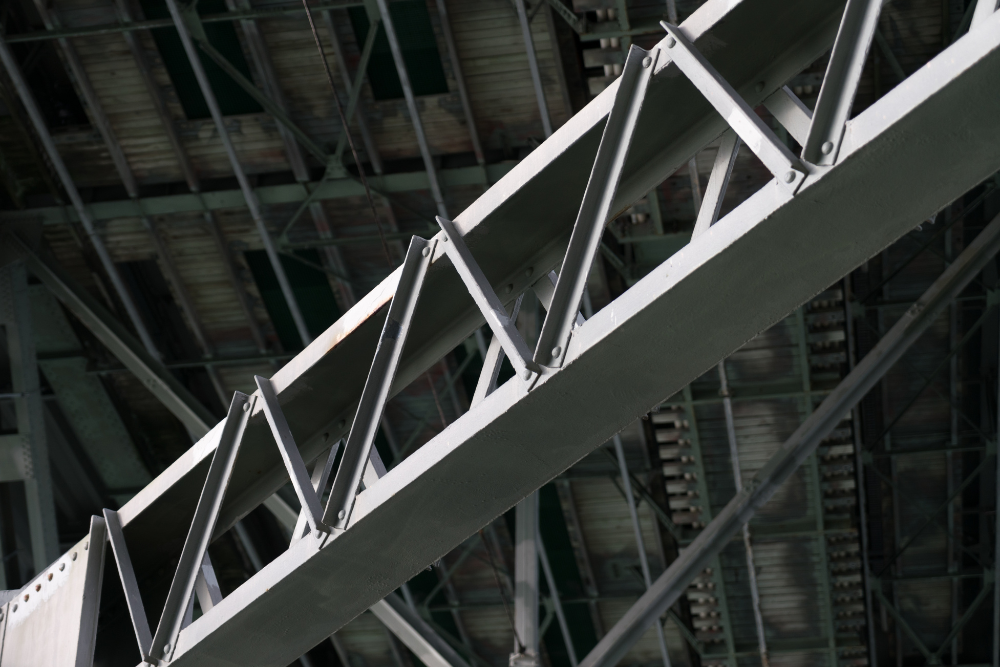Lateral torsional buckling (LTB) is a critical structural phenomenon that affects the stability and safety of beams subjected to bending loads. It occurs when a beam experiences not only bending but also lateral displacement and twisting of its cross-section, which can lead to a significant reduction in its load-bearing capacity. In extreme cases, LTB can even result in catastrophic structural failure. This issue is especially important in structural design, where engineers must carefully assess the susceptibility of beams to lateral torsional buckling. Understanding the factors that influence LTB, such as geometry, material properties, loading conditions, and geometric imperfections, is crucial for mitigating the risks associated with this phenomenon.
What is Lateral-Torsional Buckling?
Lateral torsional buckling (LTB) is a complex phenomenon that occurs in beams subjected to bending loads. Unlike simple bending where a beam deforms only in the plane of the applied load, LTB involves both lateral displacement and twisting of the beam’s cross-section. This out-of-plane deformation can lead to a significant reduction in the load bearing capacity of the beam and, in severe cases, structural failure. The compression flange of the beam is particularly susceptible to buckling due to the compressive stresses induced by the bending moment.
The Behavior of Lateral Torsional Buckling
What Factors Influence LTB?
Several factors influence the occurrence and severity of LTB, including:
- Beam geometry: The cross-sectional shape, dimensions, and the moment of inertia of the beam play a crucial role. I-shaped beams with slender flanges are more prone to LTB.
- Material properties: The modulus of elasticity and yield strength of the material affect the beam’s resistance to buckling.
- Boundary conditions: The way the beam is supported at its ends and along its length can influence the buckling behavior.
- Loading conditions: The magnitude, location, and type of applied loads significantly affect the likelihood of LTB.
Beam-Column Theory
When beams are subjected to both axial loads and bending moments, the phenomenon of beam-column theory comes into play. This theory considers the combined effects of axial compression and bending on the stability of the beam. LTB can be analyzed within the framework of beam-column theory to account for the interaction between these two loading conditions.
Geometric Imperfections
Real-world beams are never perfectly straight or uniform. Geometric imperfections, such as initial out-of-straightness or variations in cross-sectional dimensions, can significantly influence the onset of LTB. These imperfections can introduce additional stresses and reduce the beam’s resistance to buckling.
Design Considerations
When designing beams to resist LTB, several factors must be considered:
- Slenderness ratio: The slenderness ratio, defined as the ratio of the effective length to the least radius of gyration, is a key parameter in determining the susceptibility of a beam to LTB.
- Compression flange restraint: Providing adequate restraint to the compression flange can significantly improve the beam’s resistance to buckling.
- Material selection: Choosing materials with high yield strengths and good torsional rigidity can enhance the beam’s performance.
- Load eccentricity: The eccentricity of the applied load can influence the magnitude of the torsional moment and, consequently, the likelihood of LTB.
- Code provisions: Adhering to relevant building codes and standards ensures that the beam is designed to meet safety requirements.
How Does the Position of the Load Affect LTB?
The position of the applied load relative to the shear center of the beam’s cross-section has a significant impact on LTB. Loads applied away from the shear center induce torsion in the beam, increasing the likelihood of buckling.
Whether LTB can be Neglected?
In many engineering applications, LTB cannot be neglected. Structural stability is a paramount concern, and ignoring LTB can lead to catastrophic failures. However, in some cases, particularly for short, stocky beams or beams with adequate lateral support, LTB may not be a critical design consideration.
Buckling Analysis
To prevent LTB, engineers must conduct buckling analysis. This involves determining the critical load at which the beam will buckle. Eigenvalue analysis is a common numerical technique used to calculate the critical load. Factors such as geometric imperfections, initial out-of-straightness, and residual stresses are often considered in the analysis.
What else to Consider about LTB?
Lateral torsional buckling is a complex phenomenon that must be carefully considered in the design of beams and other structural elements. By understanding the factors that influence LTB and employing appropriate design strategies, engineers can ensure the safety and reliability of structures.
Factors such as beam geometry, material properties, loading conditions, and geometric imperfections all play a role in determining the susceptibility of a beam to buckling. Through careful analysis and design considerations, LTB can be effectively mitigated, resulting in structures that are both efficient and durable.
So it’s important to pay attention to these recommendations:
- Adequate lateral support: Providing lateral support along the compression flange can significantly increase the beam’s resistance to LTB.
- Use of stiffeners: Adding stiffeners to the compression flange can increase its torsional rigidity and reduce the likelihood of buckling.
- Consider composite sections: Composite sections, such as steel-concrete composite beams, can offer increased resistance to LTB.
- Perform detailed analysis: Conduct thorough buckling analysis to accurately assess the behavior of beams under various loading conditions.
- Consider geometric imperfections: Account for geometric imperfections in the analysis to obtain more realistic results.
- Consult with a structural engineer: For complex structures, consult with a structural engineer to ensure that the design is adequate and safe.
By following these recommendations and employing appropriate engineering principles, designers can ensure that their structures are safe, reliable, and efficient.


